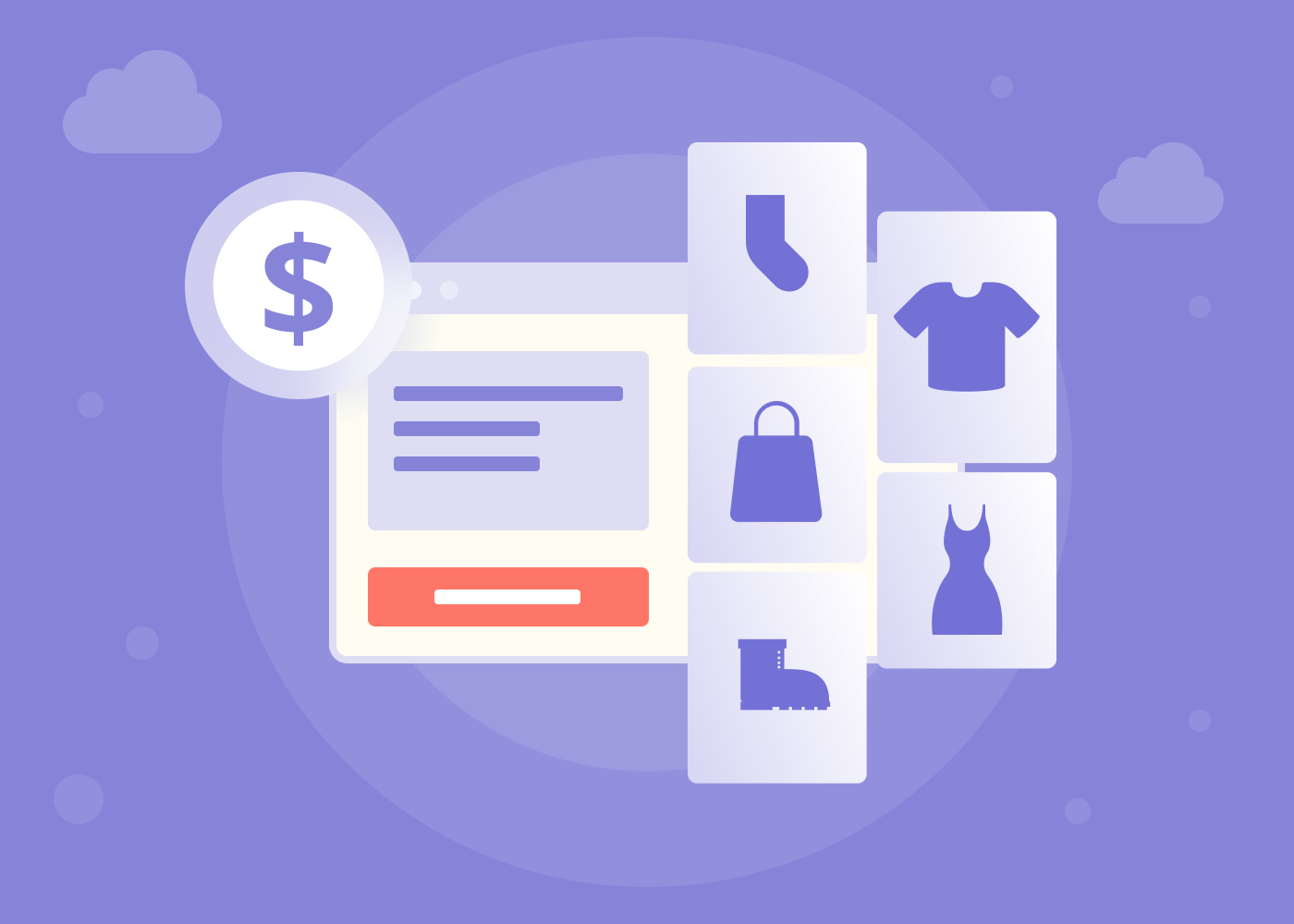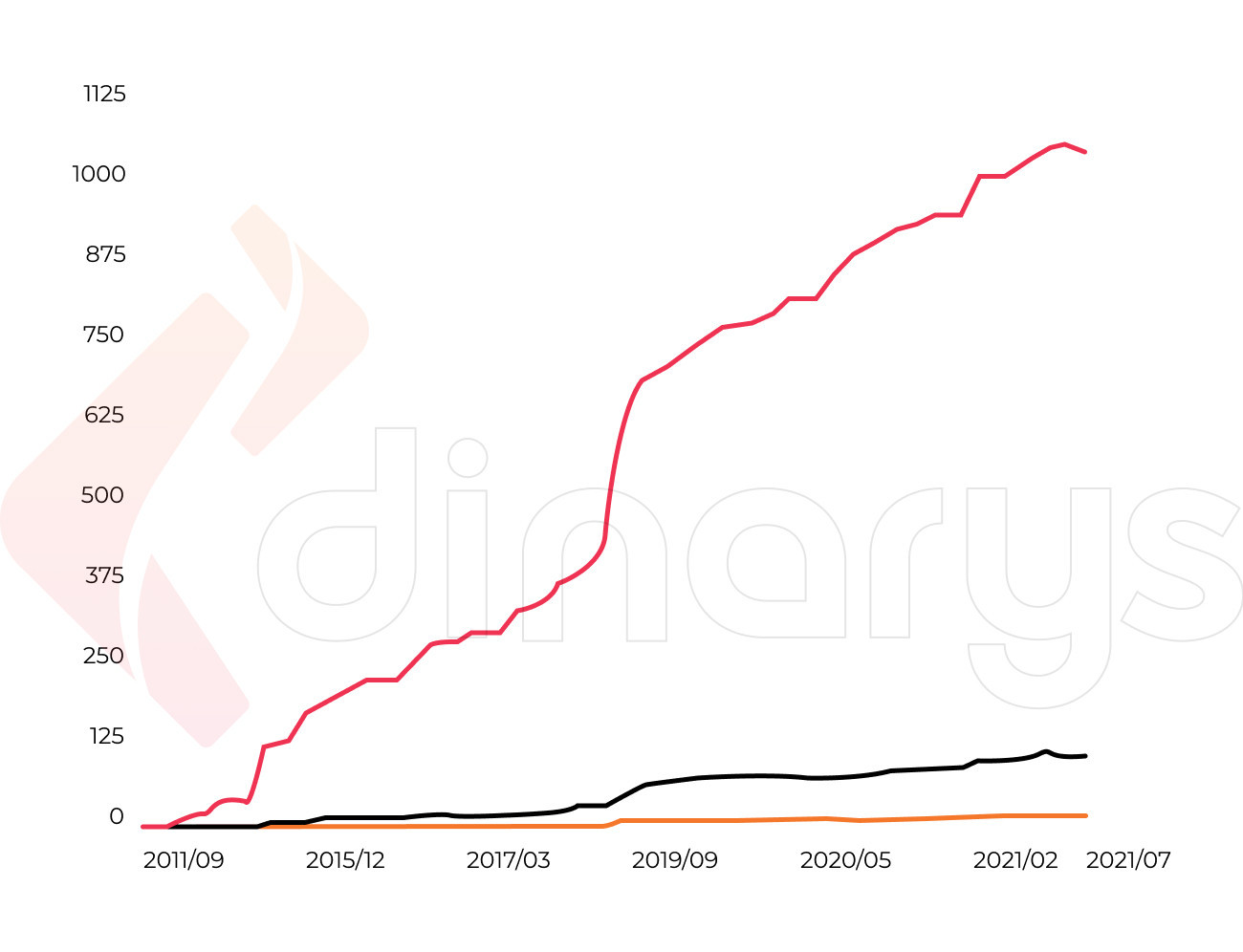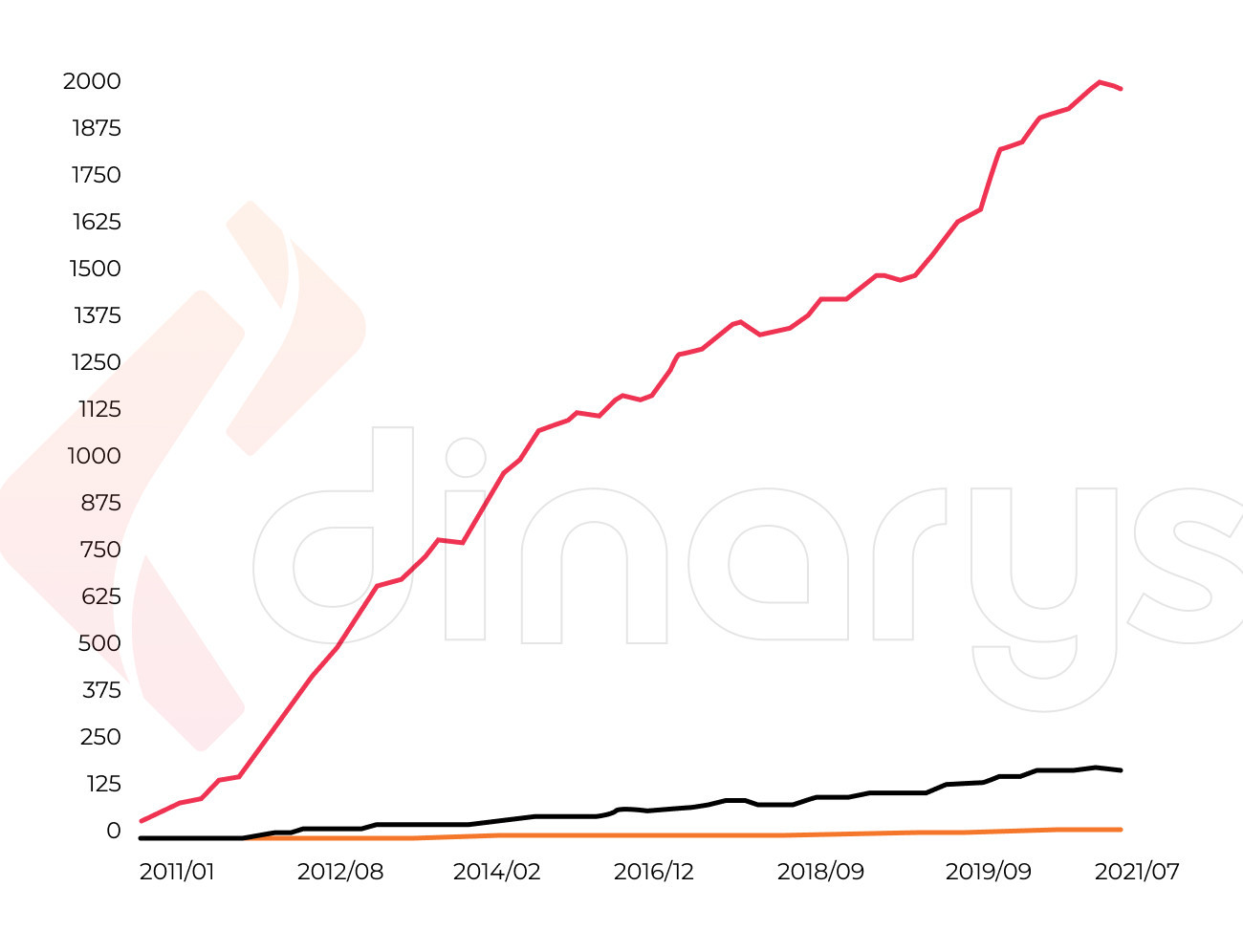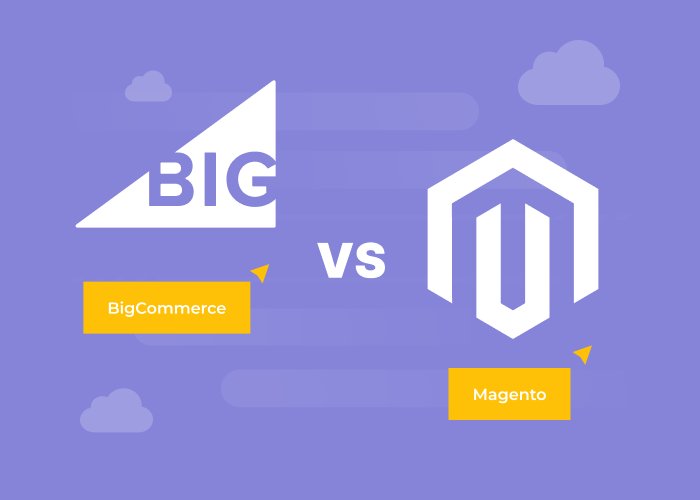Content
Comparison of E-commerce Platforms for Medium and Big Businesses

Time to read: 15 minutes
The events of 2020 will be felt for years to come and shape the way we buy online. It is not a secret that the e-commerce industry flourished during the Covid-19 outbreak. Consumers worldwide have been turning to online stores to shop for a variety of products, from groceries to electronics. E-commerce now has a higher share of the retail market than ever before. Picking the right platform for your e-commerce venture is a tough decision. To facilitate the effort, we would like to offer you the top e-commerce platforms comparison for large retailers based on reliable statistics.
11 E-commerce Statistics to Know in 2021
Do you sell online and want to boost your business? Numbers never lie. It is vital to know the statistical facts about e-commerce to scrutinize your website and make any necessary changes.
The list below presents the most accurate e-commerce statistics to know about the year of 2021.
The year 2021 will have 2.14 billion people shopping online globally.
In fact, with the global population expected to reach 7.87 billion people, that makes about 27.2% of the world’s population. Considering all those potential customers, it makes sense to invest in an online store. Moreover, this number has been rapidly growing over the years and continues to grow.
In 2020, retail e-commerce sales worldwide reached $4.28 trillion.
Moreover, we expect e-retail revenues to increase to $5.4 trillion in 2022. Indeed, online shopping is one of the most popular things people do online. Now let’s take a look at what came out of this.
63% of shopping quests start online.
This means that, when it comes to shopping, most people start by surfing the net. Then, it depends on the online store whether it will attract and retain customers or if they will go to a brick-and-mortar store.
It is high time to capture your customers’ attention. At Dinarys, we build e-commerce solutions with the focus on giving your customers the perfect online experience from the very first step.
One of the top reasons people shop online is that they can shop at all hours of the day.
The Global Online Consumer Report The Truth About Online Consumers by KPMG revealed the main reason for buying online. Unsurprisingly, it is the flexibility of shopping hours. Consumers are motivated to shop online instead of going to a physical store because they can do it 24/7.
The pandemic has changed consumer behavior, and the preferences in delivery have also changed. That is why another top reason people shop online is free delivery.
51.1% of consumers mentioned free delivery as one of the main reasons they make purchases online. Moreover, the ease and convenience of online shopping came to be the priority. Customers prefer a free shipping option offered by online stores, and also want to receive their orders as quickly as possible.
49% of online customers do not proceed to checkout and abandon their carts when encountering extra costs.
Online shoppers consider hidden or additional fees and costs the most frustrating aspects of e-commerce that lead them to abandon their orders.
In March 2020, 88.05% of online shopping orders were abandoned.
In other words, visitors did not convert into buyers. The automotive industry had the highest cart abandonment rates out of all measured categories, a 96.88% abandonment rate.
Research by BrightLocal suggests 91% of consumers aged 18-34 trust online reviews as much as they trust personal recommendations.
Positive feedback helps grab buyers' attention and interest. Likewise, online reviews can effectively build trust and confidence when consumers are either looking specifically for your business or for a general product or service that your business offers.
“The quality of a company’s customer service can make (or break) the bank”, states Gladly.
According to them, 69% of customers would spend more with a company delivering good customer service, while 92% would refuse the services of a company after a negative customer experience.
Big and small businesses are coming to realize how crucial it is to meet their customers’ expectations. It is those expectations that influence a consumer’s decisions. As a result, it leverages their loyalty, which then reflects on long-term revenue.
Online shoppers find it important to take a look at product images (78%), customer reviews (69%), and side-by-side product comparisons (46%) before making a purchase (BigCommerce, 2021).
In the landmark study by Catalyst and Kanta, Rob Gonzalez, chief marketing officer & co-founder at Salsify, sums this up by saying: “the search bar and product detail page are the primary places where consumers will interact with your brand… the PDP (product detail page) is your brand marketing — most companies don’t understand this. Millions of dollars are spent on the brand’s website, but only a small fraction on the PDP, but it should be the opposite”.
So the devil is in the details. PDPs make the difference in driving conversion. So why is it vital and leads to purchase? This way you give consumers more information about the product they are interested in. Otherwise, how are they going to know the product details? This page tells you everything about a specific item, for example, measurements, materials, ingredients, or other necessary product information. PDPs also need attractive and vivid photos and videos, price, shipping details, guarantees, and return policies.
Besides the product information, online customers, unsurprisingly, want to see feedback and compare similar products.

Online retailers with at least one active social media account make 32% more sales than those that don’t use social media platforms.
Today’s shopper journey is broader than ever. Not only do consumers shop at a range of retailer websites, but they also shop using traditional search engines and social media platforms. They additionally use these platforms for a variety of activities during their cross-channel shopping journey.
When it comes to social media platforms, shoppers surf them for inspiration and new experiences. On the other hand, they also visit online stores for research and product/price comparisons. This cross-platform shopping manifests the hallmark of today’s online purchasing experience. Cross-platform shopping bonds the importance of integrating retail, search, and social strategies. At Dinarys, we believe a solo channel is not enough for medium and big businesses.
Best Enterprise E-commerce Platforms

The impact of the global pandemic on e-commerce cannot be denied. Where some industries suffered big losses as a result of Covid-19, e-commerce exploded.
The above statistics show the current state of large-scale e-commerce platforms. Moreover, the data can be used to forecast future developments. Looks like it is high time to start an online store, doesn’t it?
E-commerce Platforms Review
The internet offers a variety of e-commerce platforms, which makes it even more difficult to choose the best one. We can simplify the task for you by providing a review of specific examples of platforms.
On SimilarTech, you can get an insight into the way e-commerce platforms for medium and large businesses share the web. In the category of top100k sites, Shopify leads the pack, closely followed by Magento. Among the top 1m sites, WooCommerce forges ahead with 922,640 websites.

Let us take a look at those giants of e-commerce and review them. What are their benefits and drawbacks? What makes them so special? Why do medium and large businesses choose them?
WooCommerce
- Did you know that in the early days, Mark Forrester, Magnus Jepson, and Adii Pienaar only knew each other online and started WooCommerce as themes to design online stores?
- Key stats: 4,414,537 live websites are using WooCommerce.
| Pros | Cons |
The platform doesn’t require deep knowledge of web development. It creates shop-related pages automatically, which is very convenient and saves time. It includes pages for viewing shopping carts and checkout. As soon as you add one or more products, they will automatically appear on your shop home page. | WooCommerce does not come with support for any shipping solution out of the box. Each payment gateway has to be set up differently. Moreover, every plugin needs configuration and setup. You are constantly playing a game of plug-and-play. |
| WooCommerce provides good integration and offers a wide range of plugins and themes. | The game of plug-and-play can be tiring. What is more, some plugins are costly yet necessary. |
| Low cost, You can start an online shop with barely any investments. |
Shopify Plus
Did you know that Tobias Lütke, who founded Shopify in 2006, started with selling snowboards and later expanded the venture to complete e-commerce solutions?
- Key stats: There are 13,329 websites using Shopify Plus, 6,059 currently live websites, and an additional 38,673 domains that redirect to websites in this list.
| Pros | Cons |
| The platform offers vast possibilities for theme customization and settings. | The included reporting is limited. At times, you need to invest in outside help to get in-depth analytics and accounting reports. |
| 24/7 seller support. | Shopify Plus has skyrocketed over the past 5 years. Such expansion turned out to be a disservice because the support they provide doesn't seem as dedicated and helpful as it once was. |
| Shopify can sell across multiple channels and has partnerships with some great systems (Shipstation, Uber, CreateSend/MailChimp). |
Squarespace Commerce
Did you know that Anthony Casalena worked out of his dorm room to develop a drag and drop website builder for the public?
- Key stats: 82,343 websites are using Squarespace Commerce, which includes 70,090 currently live websites. An additional 71,010 domains redirect to sites in this list.
| Pros | Cons |
| Stunning templates optimized for desktops, tablets, and mobile devices can help you design an exquisite website via simple drag and drop. | A drag and drop system of website builders can be frustrating when items do not move as precisely as you need them to. Resizing columns and laying out the whole page takes a lot of time and can sometimes be a headache. |
| Squarespace performs fast deployment. | Standard analytics keep track of basic traffic and sales without needing a secondary tracker but may not satisfy someone looking for extra detailed information. |
| The platform is quite unfriendly for any ad network integrations, so you won’t be able to load up your site with ad placements. |
- A useful tip: Squarespace is good in visual design. Their templates are smooth and stylish. Having put some thought into the store design, you will make your products shine. However, if you intend to grow and expand, we advise opting for another e-commerce platform, since Squarespace Commerce won’t let you spread your wings fully.
Magento
Did you know that Magento developers Roy Rubin and Yoav Kutner sold it to eBay only 3 years after the release? Magento is definitely one of the top e-commerce platforms for large retailers.
- Key stats: 743,744 websites are using Magento, which includes 206,162 currently live websites and an additional 460,454 domains that redirect to sites in this list.
| Pros | Cons |
| Magento is fully customizable. It builds a unique online store on well-structured architecture. | Beginners may find it hard to customize and manage the website. It will take them some time to figure out the platform and all its possibilities. |
| The platform allows you to customize its open-source code to create additional features and functionality. | Creating a website for your needs may require accessing skillsets from outside the company. |
| Magento has a large add-on marketplace. | The platform requires a considerably large server for smooth functioning. |
| Tons of integration options. | The Community Edition has no 24/7 support. |
- A useful tip: 1.0 Magento Community Edition is a solid e-commerce platform. It is a good choice for large, enterprise-level businesses that have the potential for more capacity, scalability, and unique features.
WixShop
Did you know that Wix joined Facebook in 2011 and became one of the first e-commerce platforms in the social commerce trend?
- Key stats: About 4,565,423 live websites use Wix.
| Pros | Cons |
| Wix is a user-friendly platform because the drag and drop builder makes it a lot easier to navigate than other web-building sites. Besides, you can easily use additional functions (photo galleries, booking forms, and members’ areas). | Wix is not the best choice for very large businesses, as its functions and features may fail to back up a huge online business. |
| Easy to make fast updates from the Wix App Market. | Sometimes, loading speed leaves much to be desired. |
| Medium businesses may be dissatisfied with the lack of SEO analytics. |
Prestashop
Did you know that Igor Schlumberger and Bruno Lévêque launched the platform in 2007 as a student project at an IT school in Paris?
- Key stats: 722,142 websites are using PrestaShop, which includes 331,251 currently live websites and an additional 244,426 domains that redirect to sites in this list.
| Pros | Cons |
| PrestaShop is a flexible, scalable, and customizable open-source platform. | The platform does not give a lot of free templates. Additional features are expensive. |
| The PrestaShop marketplace has a large library of plugins and extensions for any specific feature. | Customer support is expensive. The quality of customer support is poor. |
| Clear and well-structured workflow with customer management and emails | Prestashop is suitable for small to medium stores. |
| Lots of payment option plugins that you can use to sell globally. |
X-Cart
Did you know that X-Cart was the first downloadable PHP/MySQL shopping cart platform in the world? Another interesting fact is that Ruslan Fazlyev got expelled from college because he was focused on its development.
- Key stats: There are 22,749 websites using X-Cart, which includes 4,209 currently live websites and an additional 8,590 domains that redirect to sites in this list.
| Pros | Cons |
| Open, customizable source code. | X-cart works in a PHP environment. It means you will probably need a developer who could add new features to your store. |
| Built-in apps & themes marketplace | The license does not include hosting. |
| 24/7 customer support. | Support and premium features are expensive. There's nothing support can do for you, especially when it comes to issues with the marketplace updates or settings. |
| After a year of being a client of X-Cart, new upgrades will cost you more. |
What about other e-commerce platforms not on the list?
There are other strong platforms that did not get into our list of top 8 e-commerce platforms for large retailers. Still, they are definitely buzzworthy. One of them is Shopware. We cannot ignore a platform with such stats.

Shopware
Did you know that the German open-source platform Shopware, established in 2000, focuses on the incentive of emotional shopping and customer experience? It’s important to include this platform in our e-commerce solutions comparison.
- Key stats: 90,269 websites using Shopware, which includes 45,915 currently live websites, and an additional 158,792 domains redirect to sites in this list.
| Pros | Cons |
| Shopware has an intuitive user interface with flexible configurations. Moreover, it offers a rich extension base to boost functionality. | The platform has high server requirements and you may need to hire a developer for the technical specifications. |
| 24/7 live support. | Expensive pricing plans and licensed plugins may not fit small-budget businesses. |
| Multiple sales channels. | |
| SEO optimization and marketing tools. |

BigCommerce
Did you know that Eddie Machaalani and Mitchell Harper started working together after meeting in an online chatroom?
- Key stats: 147,691 websites use BigCommerce, which includes 53,974 currently live websites, and an additional 87,572 domains redirect to sites in this list.
| Pros | Cons |
| Besides the attractive design, BigCommerce has a helpful feature to separate your regular website and your online store. In case one goes down, you won’t have to tinker with the other. | Small businesses can’t afford unique designs because of high costs. Beginners may find it difficult to edit the interface. |
| Multiple payment options. | It may be inconvenient to add tracking information every time you get a custom order. |
| 24/7 customer support. |
- A useful tip: BigCommerce is well suited for any business planning to scale. The platform offers the most impressive features at truly affordable prices while still being easy to use.
How We Compare Best Medium-Sized Business E-Commerce Platforms
The Dinarys team has worked with many platforms and knows them from the inside. As a store owner, it’s up to you to decide what criteria you will follow to evaluate possible options chosen by our developers and project managers and identify the best one.
If you still haven’t made up your mind about which e-commerce platform meets your needs best, Dinarys’ detailed e-commerce solution comparison for large retailers will help you decide between the alternatives.
| Magento | Shopware | Shopify | |
| Category and editions |
|
|
|
| Ease of use | Difficult to use and set up. Though it requires development skills, the platform provides unique customization. | Appealing and tailor-made template system makes it much easier to maintain templates and update the store. | Easy to set up for beginners who have no technical knowledge in setting up or running a site. The whole tool is very affordable. |
| User experience | Feature-packed, yet limited free themes. | A solid plugin system enables developers to modify many parts of the store. | The simple and user-friendly interface even for beginners, fast loading. |
| Seo optimization | Strong SEO. | Strong SEO optimization and marketing tools. | Weak at SEO/content marketing. |
| Integrations | Accounting software integrations, other e-commerce, and social media, email marketing platforms. | The platform offers extensions for store management, marketing, payments, shipping, subscriptions, etc. | Blogging tools. |
| Customer Support | An active user community that can help you out on forums, paid assistance. | 24/7 live support, chat. | 24\7 customer support, live chat, email, phone. |
| Checkout and Shipping | Flexible payment gateways and shipping tools. | Multiple sales channels. | Checkout not customizable, transaction fees for certain payment gateways. |
| Mobile App | Magento Mobile App. | Shopware 6 Mobile Apps. | Shopify Apps. |
| Free trial | Magento Open Source is free to download. | 30-day free trial (includes all Premium Plugins). | 14-day free trial. |
| Prices |
|
|
|
Read more about 7 Stages of Online Shop Development.
Cloud-Based E-commerce Platform Comparison
If you have orders of hundreds or thousands of items every week, you will need a platform that ensures enough flexibility to connect to the software, helps you reduce errors, and seamlessly integrates your warehouse management and other inventory systems. The decision many new companies are facing today is whether to select an on-premise or cloud-based e-commerce platform. Established companies that already have on-premise platforms need to decide whether to move to the cloud at all.
What makes cloud-based platforms so popular?
One of the main advantages of cloud-based platforms is that hosting your e-commerce platform on a cloud implies no physical existence, so you work remotely through a third-party company. There is no need to worry about storage expansion, security, updates, or anything else. Using a cloud-based online business is quite easy and fast. It is also generally cheaper than hiring and training additional IT staff. Another good reason is that cloud-based platforms offer ready-to-go e-commerce solutions.
Moreover, cloud platforms can be scaled easily. Thus they give you the flexibility to handle more customers as your business grows. In case of seasonal demand or unexpected viral success, cloud e-commerce software automatically adjusts. You will not need to purchase additional licenses and hardware.
When it comes to security issues, e-commerce platforms are doing their best to protect your online store because a failure can ruin their reputation and damage the provider company financially. The provider is responsible for updating their system and fixing bugs. Moreover, companies maintain security relations between themselves and the customer company and between the customer company and their clients.
For a more accurate decision, an infographic of the benefits of cloud-based e-commerce platforms from Dinarys will simplify the task.
as.png)
Read more in our blog Magento Open Source, Commerce and Commerce Cloud: Different Stages of Success.
Finding the best e-commerce platform for large businesses can become a challenge. How not to get lost in the maelstrom of opportunities? How to learn to clearly understand what is good and what is not? Take your time to research the available options and assess their features, performance, prices, and more. Experienced e-commerce consultants and developers will help make your journey as efficient as possible. Just contact us to get your project estimate.
Let professionals meet your challenge
Our certified specialists will find the most optimal solution for your business.




